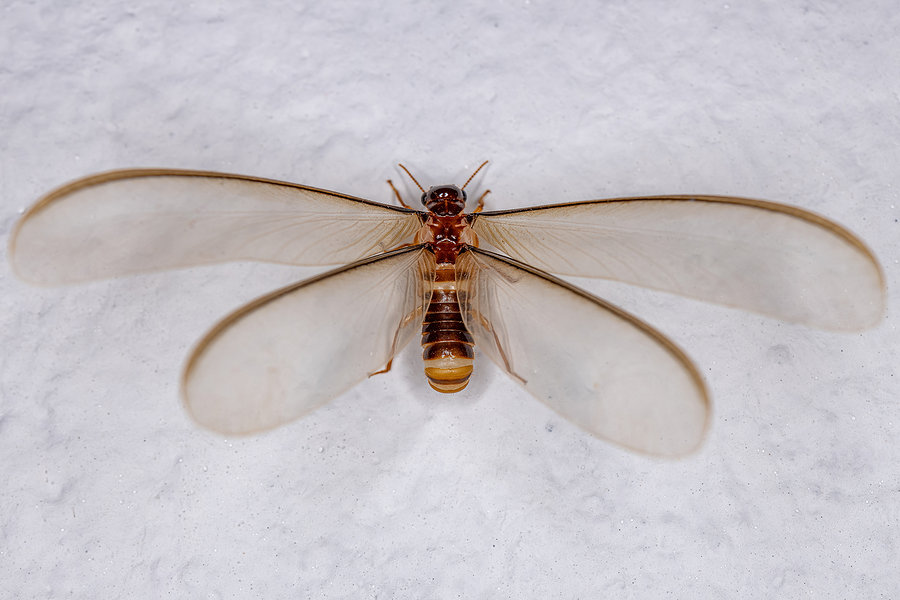READY TO GET STARTED?
REQUEST A FREE ESTIMATE
Fill out the form below or call (888) 466-7849 for a free, no-obligation estimate.

Swarming termites, also known as alates, are termites with wings that leave their colonies with two purposes in mind: reproducing and establishing a new colony. Alates resemble flying ants and will colonize anywhere with a cellulose source and adequate moisture for survival, making your home the ideal environment for a new colony. While alates don’t bite, sting, or eat wood, they are a good indication that there is a termite colony nearby.
Once the original termite colony reaches capacity and is ready to expand, termite swarms occur. These usually happen once per year, although some species will swarm multiple times. Swarms can contain anywhere from hundreds to thousands of alates whose sole purpose is reproduction and expansion of the colony. Once environmental conditions are right, the swarmers will launch themselves into the air and pair off. Once they’ve found their partner, both will shed their wings, mate, and find a new place to nest.
The timing of termite swarms depends on the type of termite you are dealing with. Subterranean termites typically swarm in the spring during daylight hours. Drywood termites swarm in late summer and early fall, and dampwood termites swarm over the summer. Termites will swarm once conditions are ideal, usually the day after a rain shower with overcast weather and winds less than 6 mph. Damp soil after a rainstorm also helps with nest building.
If a colony is already established inside your home, termites may swarm inside. These alates will try to squeeze through cracks and crevices in your foundations and walls to reach open air. Alates are also attracted to light so they can often be found near windows and light fixtures.
Termite swarms vary depending on what species it is. Drywood termite swarms are usually smaller than other termites with less than 100 swarmers. They will swarm in late summer and fall. Due to the small size of the swarm, you may not see the signs of drywood termites until they are already established. Dampwood termites swarm in the summer months. They are of less concern to homeowners as houses don’t typically have the moisture content necessary for them to survive. They can, however, be found in wood structures surrounding homes, e.g. utility poles. Subterranean termites are the most common and have the largest swarms, sometimes numbering into the thousands. These termites swarm in the spring between March and June.
While swarms don’t necessarily mean you have a termite infestation in your home, they are a good indicator that there is a thriving colony nearby. If you spot swarming termites in or near your home, consider a termite inspection to help identify signs of termites you may have missed and ensure you don’t have a hidden colony eating your home from the inside out.
If you suspect termites, contact a professional pest control company who can give your house a thorough inspection and help with a termite control and prevention plan going forward.
How Do I Know if I Have Bed Bugs?
Preparing Your Lawn for Spring
Millipede vs Centipede – Which Is More Dangerous?
Categories